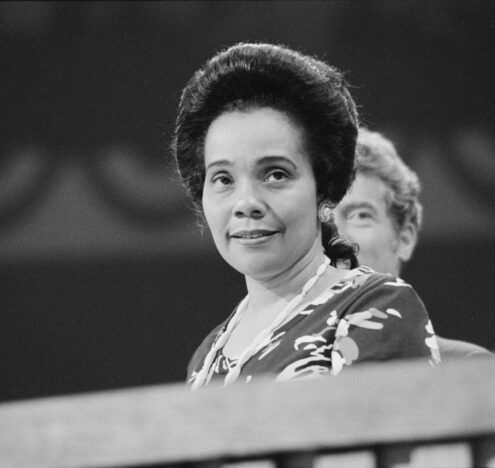Secretary of State Antony Blinken and Russian Minister of Foreign Affairs Sergey Lavrov are scheduled to meet in Reykjavik on the sidelines of the Arctic Council Ministerial on Thursday. The meeting is expected to cover a range of bilateral issues and coordinate a meeting between the two heads of state next month. While President Joe Biden has a range of legitimate concerns to raise with President Vladimir Putin, his overwhelming top priority is preserving America’s security and ability to prosper — and that is not helped by reflexive, across-the-board opposition to all Russian interests.
One of the biggest potential flash points in US–Russian relations is in the contentious situation surrounding Ukraine. Tensions between Kiev and Moscow appeared near the breaking point last month when both capitals blamed the other for stoking military tensions, resulting in Moscow deploying over 100,000 modern forces near the Ukraine–Russia border. In the midst of the buildup, Blinken went to Kiev to deliver a message from Biden that the United States was, “committed to Ukraine’s independence, to its sovereignty, to its territorial integrity.”
NATO Secretary–General Jens Stoltenberg seemed to imply Kiev had reason to believe NATO membership was coming when he said that only “the 30 NATO allies (could) decide when Ukraine is ready for membership. No one else has any right to try to meddle or to interfere in that process.” That did not sit well with Putin, unsurprisingly, who warned at an annual speech, that no one should “think of crossing the red line with Russia.” If any did cross the line, he promised they would get an “asymmetric, fast and tough” response.
TO BE OR NOT TO BE A MEMBER OF NATO
Some in Washington believe the only way to deal with Russia is via coercion, sanctions, or threats of force. One commentator lamented that although Russia did not attack Ukraine last month, Biden did not, to his satisfaction, take a firmer response. It is clear that many officials argue the United States should be prepared to go as far as providing “the full weight of the transatlantic alliance” to Ukraine as they would for NATO allies. That is an unwise policy and would do far more to weaken American security than to strengthen it.
In the months before Russia launched a limited incursion into Georgia in 2008 to secure two Russian-dominated provinces, NATO officials had made many — and direct — overtures to Georgian officials that they would be invited to join NATO. Russian leaders were emphatic that Moscow would not allow a military alliance to advance to the Russian border.
Russia considers it a core national security imperative to keep NATO off its border and has already shown it is willing to engage in limited use of force to prevent it. Though Washington rightfully rejects Russia’s threats to use force, it needs to make it clear to the Ukrainian leadership that the United States will not fight a war on its behalf.
The United States and other NATO allies sent troops in the summer of 2008 to Georgia to take part in military exercises designed to strengthen interoperability necessary for eventual alliance admission. In April 2008, NATO announced that its members had “agreed today that (Georgia and Ukraine) will become members of NATO.” Within months Russian forces massed near the Georgian border, claiming to be conducting field maneuvers.
Georgian President Mikheil Saakashvili had long lobbied to enter NATO and appears to have believed that by taking action against Russian troops in late July 2008 that NATO would come to his rescue. He miscalculated, as then US President George W. Bush would not risk war with Russia over the acts of an unstable Georgian leader. There are many similarities today between the pre–2008 Russian action against Georgia and recent actions associated with Ukraine.
The United States conducts many military exercises with Ukraine. Russia has just completed major exercises on Ukraine’s border and has more scheduled for this fall. Ukraine’s President Volodymyr Zelensky eagerly courts NATO membership, and Putin continues to warn that Russia considers Ukrainian membership in NATO to be a red line he won’t allow to be crossed.
KEEPING NATO AT BAY
Russia considers it a core national security imperative to keep NATO off its border and has already shown it is willing to engage in limited use of force to prevent it. Though Washington rightfully rejects Russia’s threats to use force, bluntly stated, Ukraine is not an issue for which the United States should fight a war with nuclear superpower Russia. We owe it to the Ukrainian leadership to be privately clear, at the highest levels, that we will not fight a war on its behalf.
Doing so could plunge us into a war we might not win and which could, in a worst-case scenario, turn nuclear. Such an event would be cataclysmic for America and should, therefore, not be considered. Biden’s overwhelming number one priority is to keep our country safe and preserve our ability to prosper. Risking war with Russia puts both at unnecessary risk.
Daniel L. Davis is a Senior Fellow for Defense Priorities and a former Lt. Col. in the US Army who deployed into combat zones four times. He is the author of “The Eleventh Hour in 2020 America.”




















